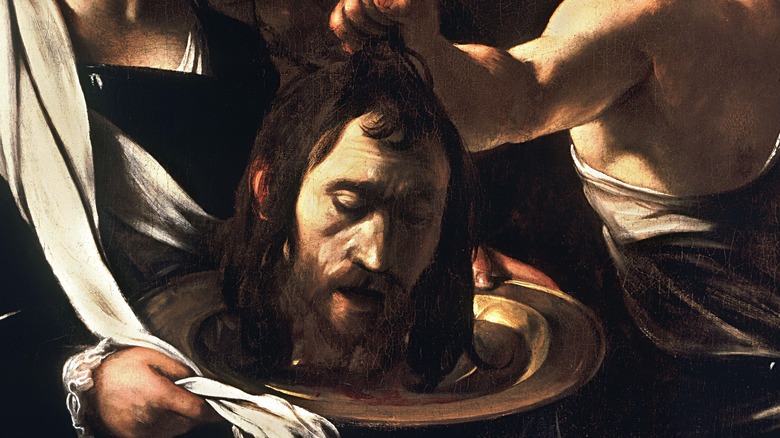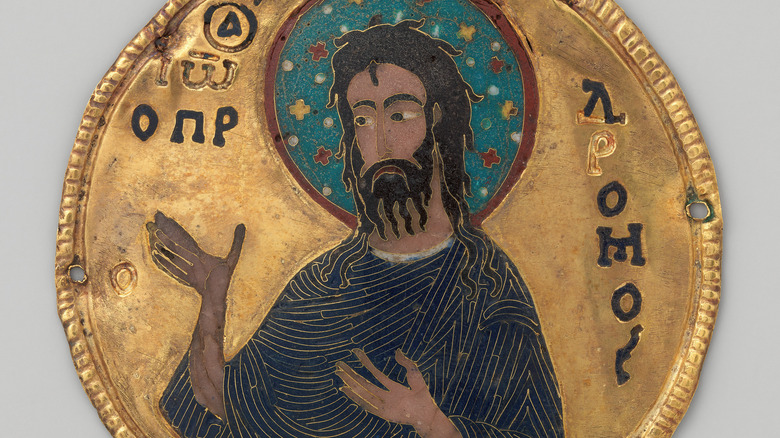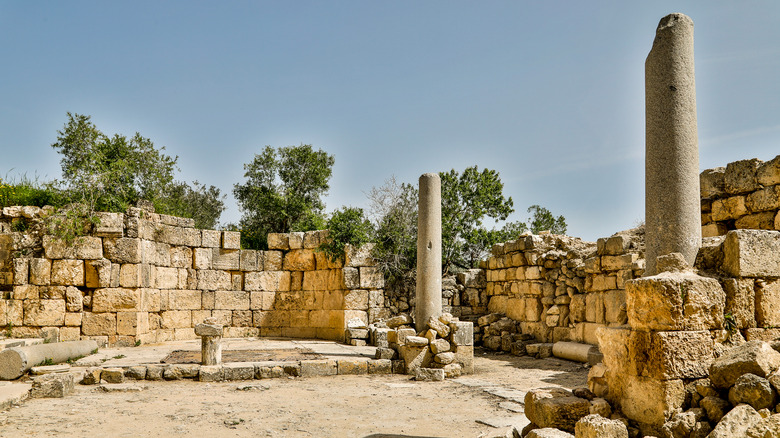The Grisly Death Of John The Baptist
Among major biblical figures, John the Baptist is particularly well-known. He was a relative of the Virgin Mary, and his preaching prepared the way for the coming of Jesus Christ, as Greek City Times notes. His name comes from the many baptisms he performed, including that of Jesus in the River Jordan (via Britannica).
John's death is well-recorded in the Bible and in the writings of the Jewish historian Flavius Josephus. All the accounts concur that he was killed on the order of King Herod Antipas, and the biblical accounts show that he met a gruesome end. Josephus says that King Herod feared John's influence over his people and had him executed for this reason, but the biblical accounts tell a different story.
According to the Bible, John had been speaking out against Herod Antipas' marriage to Herodias, Herod's brother's former wife. On Herod's birthday, Herodias' daughter Salome danced for him, and Herod enjoyed her dancing so much that he promised to give her any gift she wanted, up to half his kingdom. Because of John's criticism, Herodias told Salome to ask for the head of John the Baptist on a platter. The request upset the king, but he felt he couldn't refuse, so he sent orders to his executioner. John was beheaded in prison, and his head was brought to Salome and Herodias, as Bible Study Tools explains.
The commemoration of John's death
The martyrdom of St. John the Baptist is recognized as a holy day in many Christian churches. Most celebrate it on August 29. In orthodox churches, this celebration includes an all-night vigil and Divine Liturgy with a sermon and Holy Communion (via St. Elisabeth's Convent and the Orthodox Church in America). This service also includes hymns specifically about the saint's death. The day is not a celebration of death but of John's willingness to speak the truth and stand up to the king. It also honors his humility and his simple, disciplined, and non-indulgent life. In the Greek Orthodox Church specifically, this is a strict fast day, as noted by the Greek City Times.
The Catholic Church has a feast day for St. John the Baptist on June 24, but it also commemorates the anniversary of his death on August 29, sometimes with another feast, according to Catholic Online. It's believed to be one of the oldest feast days to be remembered in the Christian church, according to the Society of Saint Pius X.
John the Baptist's relics
John the Baptist is believed to have been buried in Samaria, modern-day Sebastia in the West Bank. This spot was venerated in the fourth century, but the tomb was violated by Julian the Apostate, according to Greek City Times. Possibly because of the desecration of the tomb, many different churches now claim to have parts of John the Baptist's body. Four different places claim to have his severed head: San Silvestro in Capite, Rome; Notre-Dame d'Amiens, France; Umayyad Mosque, Damascus, Syria; and the Residenz Museum, Munich, Germany. It's even on display in Rome (via CNN).
The Topkapi Museum in Istanbul claims to have John's right arm, while the Cetinje Monastery, Montenegro, says they have his mummified right hand. The St. Macarius Monastery, Egypt, and another monastery on the Bulgarian island of Sveti Ivan, both claim to have relics of John as well (via CNN). At the supposed site of his original burial is a mosque and the ruins of a Byzantine-era church, where visitors can still see the tomb, as See the Holy Land explains.


